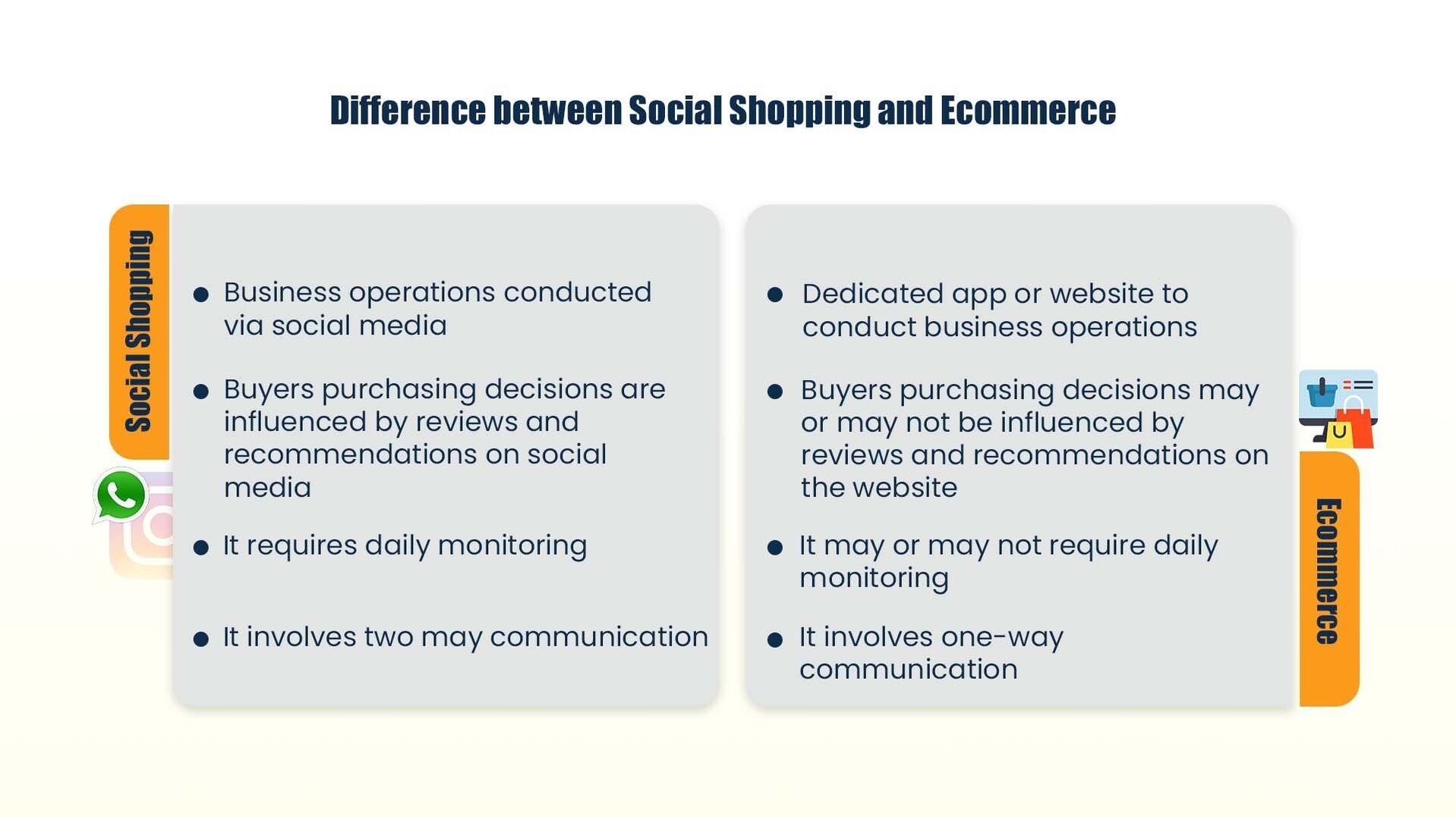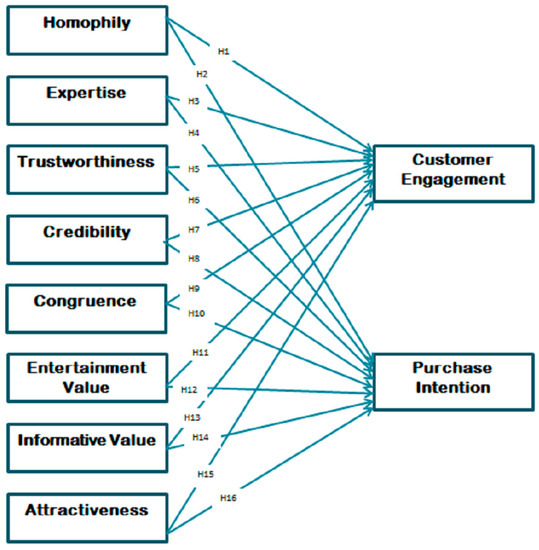The Social Shopper: How Social Media Drives Purchase Decisions


Introduction
Overview of Social Shopper Phenomenon
The emergence of social media has transformed the shopping landscape into a vibrant social shopping phenomenon. Today, shoppers turn to platforms like Instagram, Facebook, and Pinterest not just for inspiration but also for direct purchasing options. For instance, someone scrolling through Instagram may discover a trendy outfit and seamlessly purchase it without ever leaving the app.
Impact of Social Media on Purchase Decisions
The influence of social media on consumer purchasing decisions is profound and multifaceted:
- Instant Access: Shoppers can access a plethora of products with a simple scroll.
- Influencer Recommendations: Many consumers trust influencers more than traditional ads.
- Community Validation: Likes, shares, and reviews serve as powerful endorsements.
This interconnectedness not only streamlines the buying process but also makes shopping a social experience, ultimately reshaping how decisions are made.

The Psychology Behind Social Shopping
Influence of Social Proof
Social proof is a powerful motivator in the realm of social shopping. When consumers notice large numbers of likes, shares, or positive reviews, they feel reassured about their purchase decisions. It’s not uncommon for shoppers to say, “If everyone loves it, I’ll love it too!”
Role of FOMO (Fear of Missing Out)
FOMO plays a crucial role in driving social shopping behavior. Limited-time promotions or exclusive product drops create urgency, prompting consumers to buy quickly to avoid regret. For example, a friend might share a time-sensitive discount, leading others to fear missing out on a great deal, prompting immediate purchases.
Psychological Triggers in Social Media Marketing
Marketers expertly use psychological triggers to enhance purchasing behavior. These include:
- Scarcity: Items in limited supply evoke a sense of urgency.
- Reciprocity: Free samples or useful content create a feeling of obligation to buy.
- Liking: Engaging, relatable content fosters a connection between consumers and brands.
Understanding these factors helps brands tailor their strategies effectively, enhancing consumer engagement and boosting sales.

Social Media Platforms Driving Purchase Decisions
Instagram: Visual Commerce and Influencer Marketing
Instagram thrives on visual storytelling, making it a hotspot for visual commerce. Brands leverage influencers who showcase products in creative ways. For instance, a lifestyle influencer might wear a chic dress in a picturesque setting, nudging followers to buy instantly.
Facebook: Targeted Ads and Social Commerce
Facebook excels with its sophisticated ad targeting capabilities. By tracking user interests and behaviors, brands can tailor ads to maximize relevance. Advertisements featuring exclusive deals or personalized recommendations often lead to increased conversions, as users feel more connected to the offerings.
Pinterest: Inspiration to Purchase Journey
Pinterest serves as an inspiring hub for potential buyers. Users save and organize their favorite ideas and products, leading to a direct purchase journey. A user may find a DIY project and buy all necessary materials through shopping pins, turning inspiration into reality effortlessly.
YouTube: Video Reviews and Recommendations
YouTube stands out for its in-depth product reviews and recommendations. Shoppers often turn to video creators for trusted insights before making purchases. “I always check reviews on YouTube before buying electronics,” says a tech enthusiast, highlighting the platform’s impact on informed buying decisions.
These platforms not only shape how people shop, but they also create communities around products, further influencing purchase behavior.

Leveraging User-Generated Content
Importance of Reviews and Ratings
User-generated content, particularly reviews and ratings, have become vital in influencing consumer decisions. In fact, many shoppers won’t consider a product without checking its reviews first. Consider this: a product with hundreds of glowing reviews often converts better than a similar item with none at all.
Encouraging User-Generated Content
Brands can actively encourage user-generated content by:
- Creating engaging hashtags: A unique hashtag can unify customer posts.
- Running contests: Incentivizing customers to share their experiences can yield fantastic results.
- Showcasing customer photos: Highlighting real people using a product builds community trust.
For example, a skincare brand might feature customer selfies with their products, instantly boosting authenticity.
Harnessing the Power of User Recommendations
User recommendations are incredibly potent. Friends and family often hold more sway than traditional advertising. A personal recommendation might make you try a new restaurant you hadn’t considered, demonstrating the effect of trust. Encouraging satisfied customers to share their experiences can create a ripple effect, expanding the brand’s reach through organic word-of-mouth marketing.
By leveraging this user-generated content, businesses can create a powerful and trustworthy brand image that resonates with today’s consumers.

Building Trust and Credibility
Authenticity in Social Media Marketing
Authenticity plays a crucial role in establishing trust in social media marketing. Consumers are increasingly savvy and can quickly spot inauthentic messages. Brands that share genuine stories—such as behind-the-scenes looks or customer testimonials—tend to resonate more deeply. For instance, a local coffee shop might share the journey of sourcing its beans, creating a more relatable and trustworthy image.
Transparency and Ethical Practices
Transparency is essential for gaining consumer confidence. Brands that openly share their values, practices, and even challenges are viewed more favorably. It’s not uncommon for shoppers to appreciate clear labeling on products or information about supply chains. For example, a clothing brand that openly discusses its sustainability efforts often attracts eco-conscious consumers who prioritize ethical choices.
Building Long-Term Relationships with Customers
Building long-term relationships is about nurturing trust over time. This can be achieved by:
- Providing consistent value: Engage customers through regular, informative content.
- Listening and responding: Actively engaging with customer feedback fosters loyalty.
- Creating loyalty programs: Offering rewards for repeat purchases encourages a lasting bond.
For instance, a software company might offer exclusive webinars and additional support for loyal users, creating a community that keeps returning. By focusing on trust and credibility, brands can cultivate lasting relationships that ultimately drive sales and customer satisfaction.

Data Analytics and Consumer Insights
Utilizing Data for Personalization
Data analytics offers invaluable resources for brands looking to personalize their offerings. By analyzing customer interactions, companies can tailor marketing messages and product recommendations that resonate with individual preferences. For example, an online retailer might send personalized email promotions based on previous purchases, enhancing customer engagement.
Understanding Consumer Behavior on Social Media
Understanding consumer behavior on social media is crucial for crafting effective strategies. Track metrics such as engagement rates, shares, and comments to identify what content resonates most. For instance, a fitness brand may find that posts featuring user transformations garner significant engagement, leading to tailored campaigns that showcase real customer stories.
Improving Marketing Strategies through Analytics
By leveraging analytics, businesses can continually refine their marketing strategies. This involves:
- Identifying trends: Analyzing consumer data reveals what products or services are gaining traction.
- A/B testing: Testing various marketing approaches can highlight the most effective messaging.
- Setting KPIs: Establishing key performance indicators helps measure success clearly.
For example, a beverage company might discover that video ads perform better than static images, allowing them to allocate resources more effectively. Implementing these data-driven strategies ensures that brands remain agile and responsive to consumer needs, ultimately driving sales and customer loyalty.

Social Media Trends Shaping Purchase Decisions
Rise of Social Shopping Features
The rise of social shopping features has revolutionized how consumers make purchases. Platforms like Instagram and Facebook now allow users to shop directly through posts, streamlining the process. For instance, if a friend tags you in a stylish outfit post, you can click through and buy it instantly, enhancing spontaneity in shopping.
Impact of AR/VR in Social Commerce
Augmented Reality (AR) and Virtual Reality (VR) are changing the landscape of social commerce significantly. These technologies enable consumers to visualize products in their own environments before purchasing. For example, furniture brands now offer AR apps that let users place virtual couches in their living rooms. This interactive experience helps customers feel more confident in their buying decisions.
Emerging Trends in Influencer Marketing
Emerging trends in influencer marketing are also shaping consumer behavior. Micro-influencers with niche followings often drive high engagement rates, as their recommendations feel more genuine. Additionally, brands are starting to prioritize partnerships with influencers who align with their values. For instance, a sustainable beauty brand might collaborate with eco-conscious influencers to reach a like-minded audience, amplifying their message and trustworthiness.
These trends indicate a clear shift toward creating engaging, personalized shopping experiences that cater to today’s consumers, ultimately influencing purchase decisions.

Conclusion
Recap of Key Points
In summary, the integration of social media into the shopping experience has forever changed how consumers discover and purchase products. Key trends include the rise of social shopping features, the impact of AR/VR technologies, and evolving influencer marketing strategies. Brands that leverage user-generated content and prioritize transparency foster trust and credibility, significantly driving sales.
Future Outlook of Social Media in Purchasing Trends
Looking ahead, social media’s role in purchasing decisions is likely to expand even further. As technology continues to evolve, we can expect:
- Increased personalization: Brands will harness data analytics to create even more tailored shopping experiences.
- Greater use of AR/VR: As these technologies become more accessible, expect them to play a central role in product interactions.
- Innovative influencer collaborations: Partnerships will focus on authenticity, ensuring that brand messages align seamlessly with influencer values.
With these advancements, social media will remain a powerful driver of consumer behavior in the years to come, transforming the landscape of e-commerce further.

